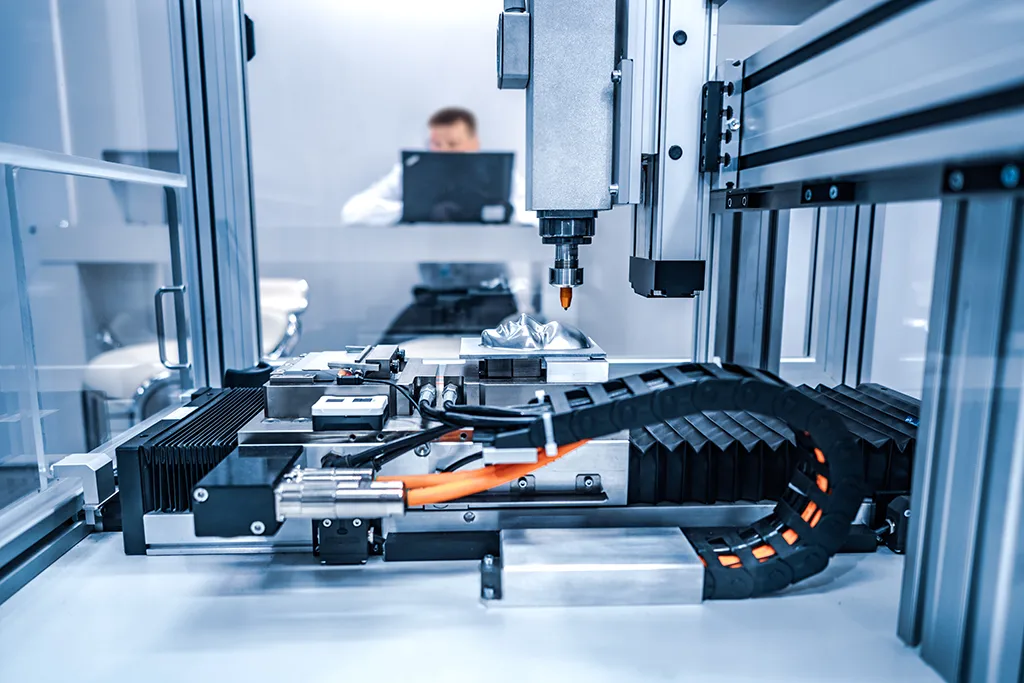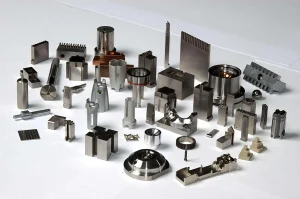CNC machines have revolutionized manufacturing by automating and improving the accuracy of various machining processes. There are several types of CNC machines, each suited for different tasks. In this article, we will explore the six main types of CNC machines and their key functions.

1. CNC Milling Machines
CNC milling machines are one of the most widely used types of CNC equipment. These machines use rotating cutting tools to remove material from a workpiece. The cutting tools are mounted on a spindle, which moves in various directions to create complex shapes. The machine cuts and drills material with high precision, following the digital commands programmed by the operator.
CNC milling machines are ideal for producing detailed parts with complex geometries. They are commonly used in industries like aerospace, automotive, and electronics for creating components like gears, engine parts, and circuit boards.
In short, CNC milling machines excel in cutting and shaping parts with precision.
2. CNC Lathes
CNC lathes are another popular type of CNC machine. Unlike milling machines, which use rotating tools, CNC lathes rotate the workpiece itself. A cutting tool then shapes the material as it spins. This process is perfect for creating symmetrical parts, such as shafts, cylinders, and rings.
Lathes are especially useful for producing round objects with a high degree of accuracy. Industries like automotive and plumbing rely heavily on CNC lathes for producing items like bolts, fittings, and bearings.
In summary, CNC lathes specialize in turning operations and are best for creating round or cylindrical parts.
3. CNC Routers
CNC routers are similar to CNC milling machines but are designed to work with softer materials. These machines are commonly used for cutting, engraving, and carving wood, plastic, and foam. They operate by moving a cutting tool along different axes to carve out shapes based on the programmed design.
Woodworkers and manufacturers of signage and cabinetry frequently use CNC routers. The machines are ideal for creating detailed patterns, intricate designs, and even 3D objects.
Simply put, CNC routers are perfect for crafting detailed shapes in softer materials.
4. CNC Plasma Cutters
CNC plasma cutters use a high-powered plasma torch to cut through conductive materials like steel, aluminum, and copper. The plasma torch heats the material until it melts, and the machine follows a pre-programmed path to make precise cuts. This method is faster and more efficient than mechanical cutting methods, especially for thicker materials.
Plasma cutters are widely used in metal fabrication, automotive repair, and construction. They are ideal for cutting metal sheets, pipes, and plates with speed and precision.
In summary, CNC plasma cutters are best for cutting metals quickly and cleanly.
5. CNC Laser Cutters
CNC laser cutters work similarly to plasma cutters, but instead of using plasma, they use a focused laser beam to cut materials. The laser melts or vaporizes the material along the cutting path, creating highly precise and clean edges. CNC laser cutters are especially effective for cutting thin materials like wood, plastic, and metal.
Laser cutters are often used in industries like jewelry making, electronics, and signage, where detailed and intricate designs are needed. The machines can also engrave or mark surfaces with high accuracy.
In short, CNC laser cutters provide precision and clean edges, making them ideal for detailed cutting and engraving tasks.
6. CNC Electrical Discharge Machines (EDM)
CNC electrical discharge machines, or EDMs, use electrical sparks to erode material from a workpiece. The process is highly accurate and allows for the creation of complex shapes that would be difficult to machine using other methods. EDMs are commonly used to work with hard metals like titanium, carbide, and hardened steel.
EDMs are often used in industries where precision is critical, such as aerospace, medical devices, and tool manufacturing. The machines excel at creating molds, dies, and intricate components that require tight tolerances.
In summary, CNC EDMs are ideal for producing highly precise parts from hard materials.
Conclusion
The six main types of CNC machines—milling machines, lathes, routers, plasma cutters, laser cutters, and electrical discharge machines—each serve unique purposes in manufacturing. CNC milling machines and lathes are the most commonly used, providing precise cutting and shaping for a variety of industries. CNC routers are great for working with softer materials, while plasma and laser cutters excel at cutting metals. Finally, EDMs are perfect for creating complex shapes in hard metals.
Choosing the right CNC machine depends on the material, design, and level of precision required for the project. By understanding the differences between these machines, manufacturers can ensure they use the best equipment for the job.






